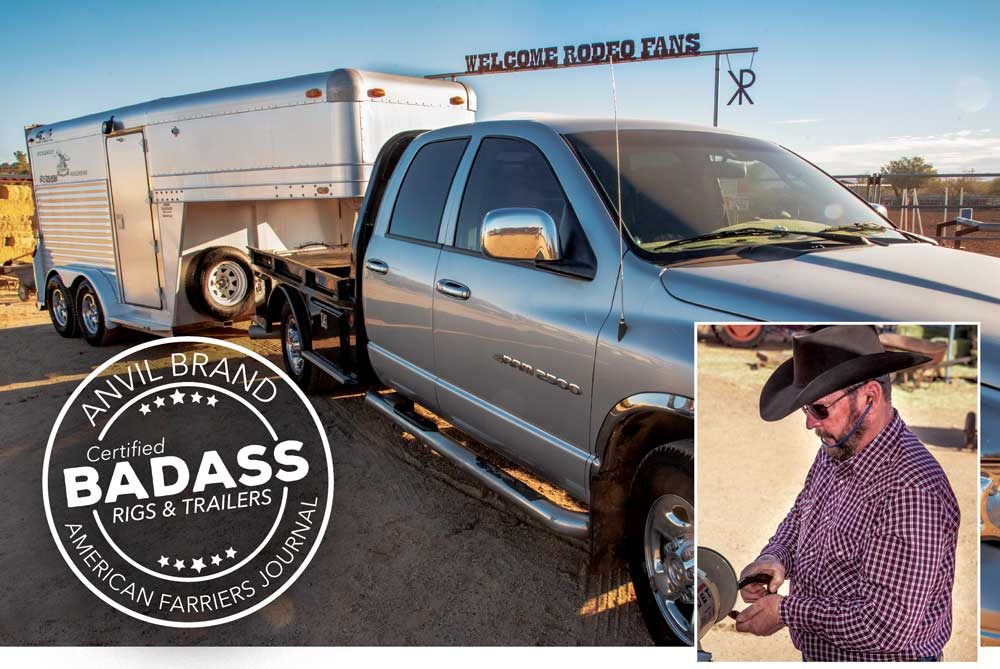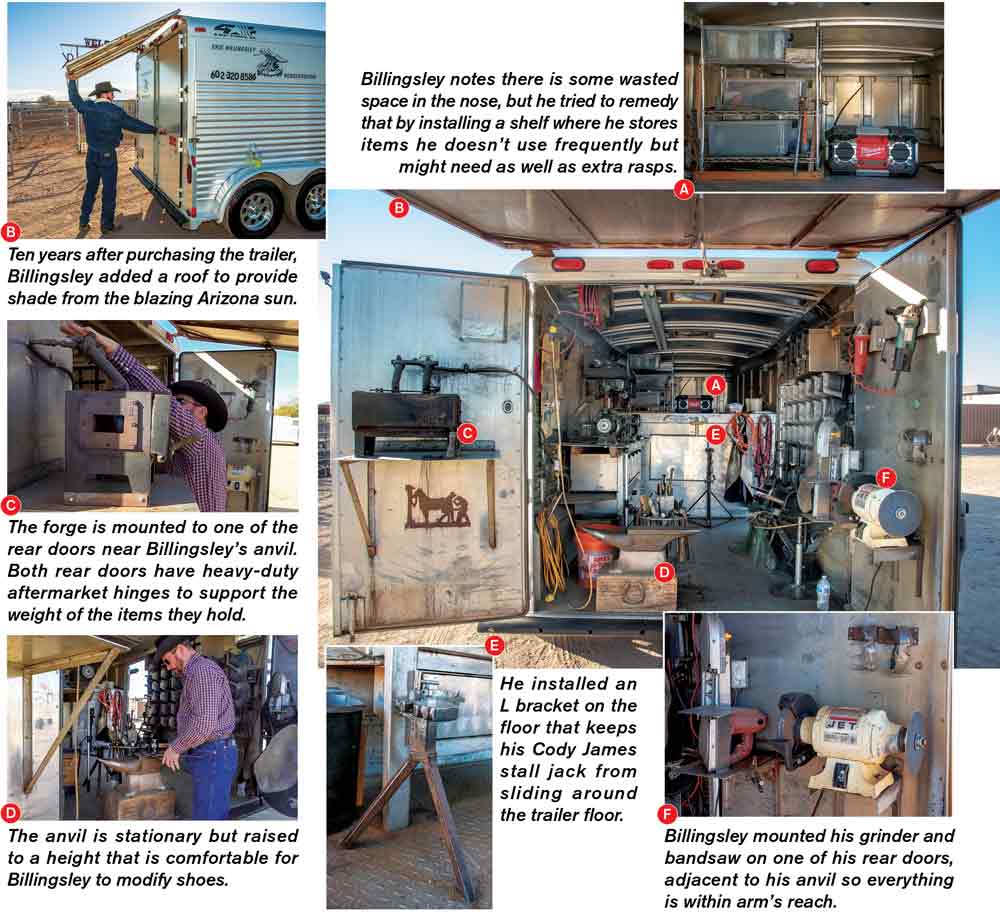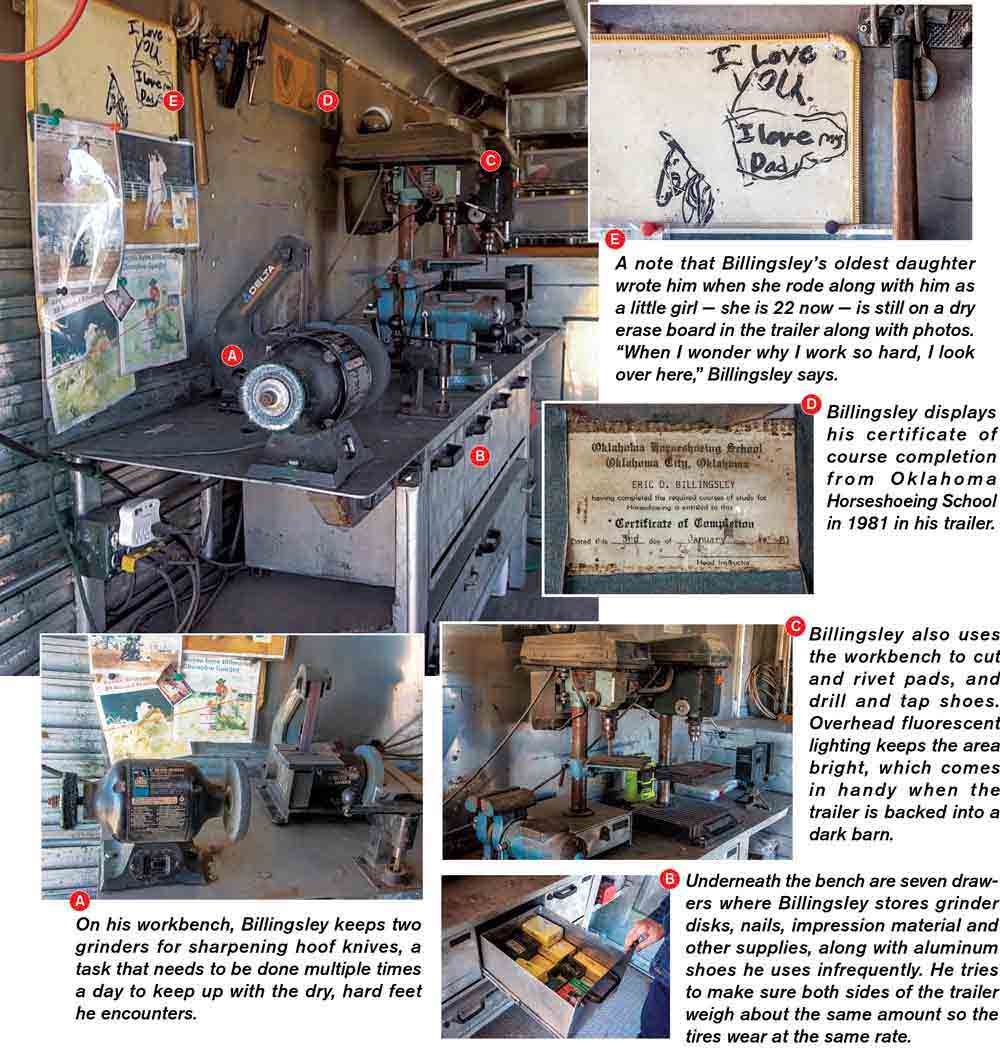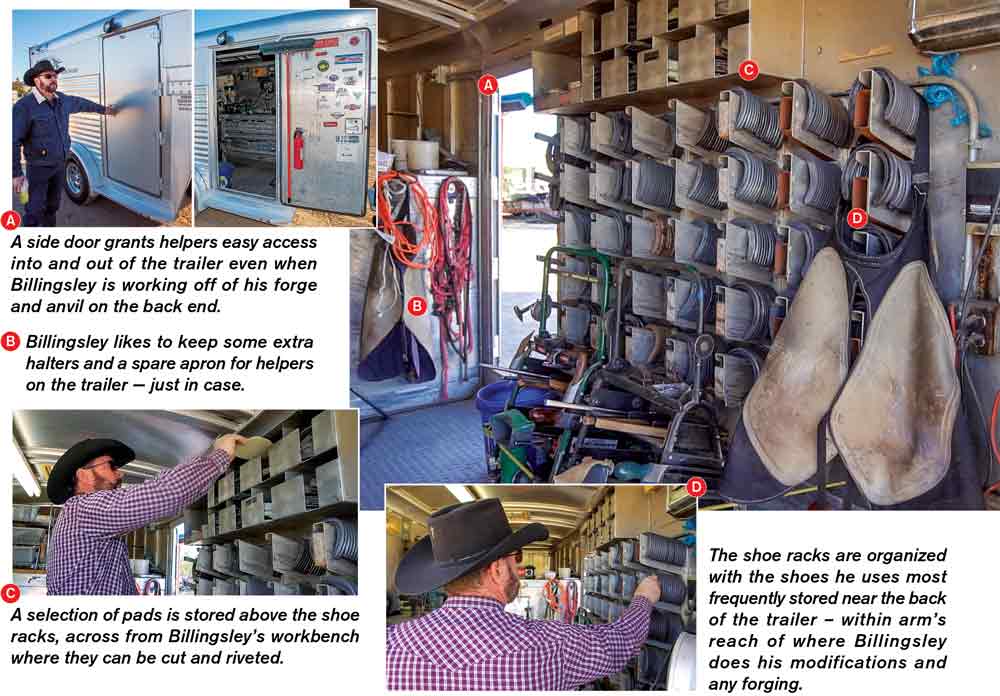If you take pride in your trailer, you tell the world you take pride in your work. That’s a lesson Eric Billingsley has learned over his nearly 30-year shoeing career.
“Whether I shoe horses well or not, people look at this rig and assume that I can shoe horses,” jokes the Phoenix, Ariz., farrier.
After more than 20 years shoeing out of the same rig, the 4-Star goose-neck trailer in Billingsley’s driveway continues to provide the efficiency and dependability that is critical to his success as a horseshoer and businessman.
He purchased the rig, which is pulled by a 2003 Dodge 3/4-ton flatbed pickup truck, as an empty shell after the frame on his previous rig broke as a result of overloading. Billingsley was trying to weld his way out of that dilemma when his wife, Leigh Ann, asked him a pivotal question.
“She said, ‘Why don’t you just get a new rig?’” Billingsley recalls. “I said, ‘I didn’t know that was an option.’”
BADASS RIGS & TRAILERS
In 2021, we will showcase standout rigs and trailers in the magazine and on AmericanFarriers.com. To see a video showcasing this rig and on future trucks and trailers, visit AmericanFarriers.com/rigs.
Billingsley took inspiration for his rig setup, which he designed himself, from the inefficiencies he identified in his previous workspace, as well as setups he observed when riding with other farriers. The hilly terrain and barn locations that encompass his 100-mile-radius service area were also considerations.
“I knew I wanted to go with the goose-neck because they pull better and I can get it into and out of a lot of tight places,” Billingsley says. “I can jackknife the trailer to get backed up to a barn where with a bumper pull you are going to hit your truck before you’ll get to the angles that I can get with the goose-neck.”
A Trailer for Two
Since apprentices are an important aspect of his business, one priority Billingsley kept front of mind when designing the trailer — which he has outfitted with a variety of Stonewell components including shoe racks, drawers and a tool carousel — was accommodating two people in the space. One way he did this was by adding a door to the side of the trailer to access supplies and the workbench inside.
“I wanted the side door so if I am working on the anvil, which is mounted to the back of the trailer, my helpers can get into and out of the trailer to get tools and use the grinders or cut pads, without us getting in each other’s way,” he says.
Billingsley has two early-career farriers who work with him 4 days a week. One of his other helpers, Steven Faulkner, worked with him full-time for about 3 years. Now, Faulkner has built up his practice, so he helps out once a week.
“I usually have at least one person with me every day,” Billingsley says. “Even with three people, this trailer works well. You never stumble over one another.”
It also comes in handy in tight spaces or stops where Billingsley might only have trims.
LEARN MORE
Arizona farriers shared photos of some other rigs that they thought were “badass.” Check them out
AmericanFarriers.com/0321
“If I don’t need to use the forge and anvil, I can just open up that side door to grab some tools and a foot stand without having to open the back of the trailer.”
Billingsley notes it’s quite a departure from his first shoeing “rig” — a 1981 Pontiac Bonneville Brougham. It wasn’t a flashy setup by any means, but it got the job done. A commitment to providing high quality hoof-care and showing clients professionalism will outshine any rig.
“It’s been a great trailer,” he says. “But as a farrier you need to be able to back it up with the work you do.”












Post a comment
Report Abusive Comment